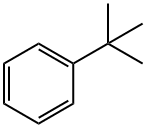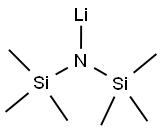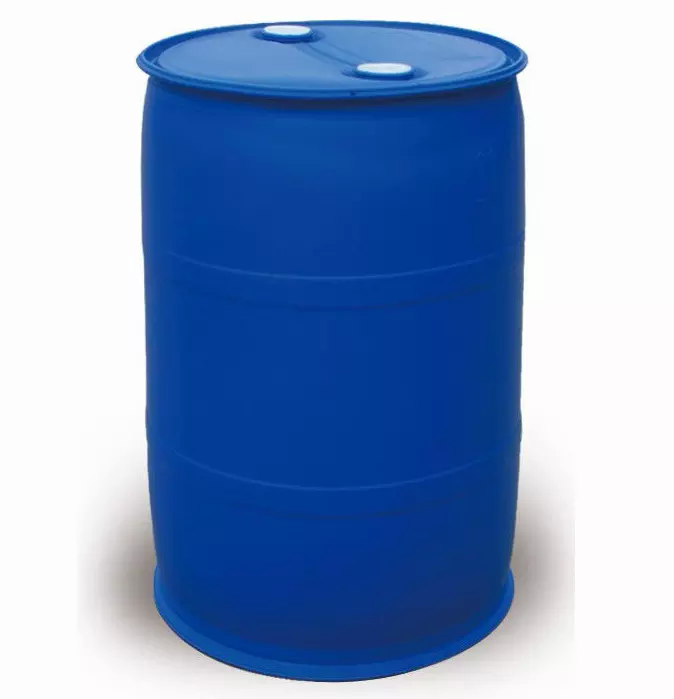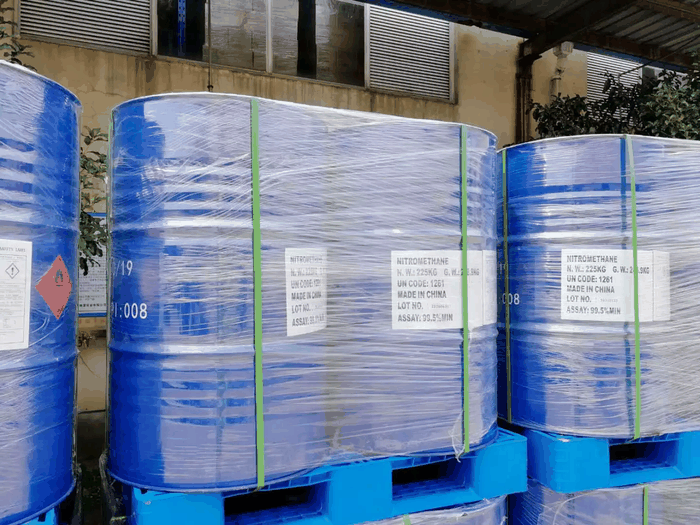tert-Butyllithium
Synonym(s):Lithium-2-methyl-2-propanide;t-BuLi
- CAS NO.:594-19-4
- Empirical Formula: C4H9Li
- Molecular Weight: 64.06
- MDL number: MFCD00008795
- EINECS: 209-831-5
- SAFETY DATA SHEET (SDS)
- Update Date: 2025-07-04 15:34:31

What is tert-Butyllithium?
Description
tert-Butyllithium solution (tert-BuLi) is an organolithium compound, used as a strong base in organic chemistry. It facilitates lithium-halogen exchange reaction and also can be employed in the deprotonation of C-H compounds and amines. it has applications in organic synthesis since it is a strong base, capable of deprotonating many carbon molecules, including benzene. tert-Butyllithium is available commercially as hydrocarbon solutions; it is not usually prepared in the laboratory. Its synthesis was first reported by R. B. Woodward in 1941.
Description
t-Butyllithium (t-BuLi) is a strong base that can deprotonate weak carbon acids, especially when weaker organolithium bases such as n-BuLi and s-BuLi don't work well. t-BuLi is a pyrophoric reagent that easily catches fire when exposed to the moisture in air. A fatal accident involving t-BuLi occurred at UCLA, in 2008.
Chemical properties
tert-Butyllithium is a colorless crystalline solid or colourless to pale yellow solution. It is more reactive than n- or sec-butyllithium and has similar properties. However, it is thermally stable. Dixon and co-workers have heated tert-Butyllithium to 100°C for 20 hr with little decomposition.
The Uses of tert-Butyllithium
- There are no commercial uses of t-butyllithium, but it is used as a polymerization initiator and as a metalating agent in the laboratory.
- Alkylating and metalating agent. Reagent for the introduction of the tert-butyl group.
- tert-Butyllithium (t-BuLi) is the most reactive of the commercially available organolithium reagents. It is supplied as a standard solution in hydrocarbon solvents, usually in a bottle sealed with a septum.
Preparation
tert-Butyllithium is not sold in large quantities. The industrial and laboratory preparations are the same: the reaction of t-butyl chloride with lithium metal in a hydrocarbon solvent. However, tert-Butyllithium is much more difficult to produce than the other isomeric butyllithium compounds and some special precautions must be taken to obtain good yields. Principally, the lithium metal must be finely divided and must contain several percent sodium. It has also been found that t-butyl alcohol in the butyl chloride is beneficial. The solvent of choice is pentane. Vigorous reflux is necessary for good yield since it apparently helps to remove lithium chloride from the surface of the metal, and pentane refluxes at about the optimum temperature. If hexane is used at the same temperature, a significantly lower yield is obtained.
What are the applications of Application
tert-Butyllithium solution can be used as a strong base in the synthesis of:
Alkyllithium derivatives form alkyl iodides and diiodoalkanes by halogen-lithium exchange reaction.
Inorganic polymer [(LiMo3Se3)n] from [(InMo3Se3)n] by reductive intercalation method.
Adducts of cinnamic acid (1,3- and 1,4-adducts) by reacting with C-C double of cinnamic acid.
Properties of tert-Butyllithium
| Boiling point: | 36-40 °C |
| Density | 0.69 g/mL at 20 °C |
| vapor density | ~3 (vs air) |
| Flash point: | 20 °F |
| storage temp. | 2-8°C |
| form | liquid |
| color | slightly cloudy |
| Sensitive | Air & Moisture Sensitive |
| BRN | 3587204 |
| Exposure limits | ACGIH: TWA 1000 ppm OSHA: TWA 1000 ppm(2950 mg/m3) NIOSH: IDLH 1500 ppm; TWA 120 ppm(350 mg/m3); Ceiling 610 ppm(1800 mg/m3) |
| CAS DataBase Reference | 594-19-4(CAS DataBase Reference) |
| EPA Substance Registry System | Lithium, (1,1-dimethylethyl)- (594-19-4) |
Safety information for tert-Butyllithium
| Signal word | Danger |
| Pictogram(s) |
 Flame Flammables GHS02  Corrosion Corrosives GHS05  Exclamation Mark Irritant GHS07  Health Hazard GHS08  Environment GHS09 |
| GHS Hazard Statements |
H225:Flammable liquids H250:Pyrophoric liquids; Pyrorophoric solids H252:Self-heating substances and mixtures H260:Substances And Mixtures Which, In Contact With Water,Emit Flammable Gases H304:Aspiration hazard H314:Skin corrosion/irritation H318:Serious eye damage/eye irritation H336:Specific target organ toxicity,single exposure; Narcotic effects H410:Hazardous to the aquatic environment, long-term hazard H411:Hazardous to the aquatic environment, long-term hazard |
| Precautionary Statement Codes |
P210:Keep away from heat/sparks/open flames/hot surfaces. — No smoking. P222:Do not allow contact with air. P223:Keep away from any possible contact with water, because of violent reaction and possible flash fire. P231+P232:Handle under inert gas. Protect from moisture. P303+P361+P353:IF ON SKIN (or hair): Remove/Take off Immediately all contaminated clothing. Rinse SKIN with water/shower. P305+P351+P338:IF IN EYES: Rinse cautiously with water for several minutes. Remove contact lenses, if present and easy to do. Continuerinsing. P370+P378:In case of fire: Use … for extinction. P405:Store locked up. P422:Store contents under … |
Computed Descriptors for tert-Butyllithium
| InChIKey | BKDLGMUIXWPYGD-UHFFFAOYSA-N |
tert-Butyllithium manufacturer
JSK Chemicals
Sainor Laboratories Pvt Ltd Unit III
New Products
4,4-Difluoropiperidine hydrochloride tert-butyl 9-methoxy-3-azaspiro[5.5]undecane-3-carboxylate Indole Methyl Resin N-Isopropylurea N,N-Dicyclohexylcarbodiimide(DCC) MELDRUMS ACID 5-METHYLISOXAZOLE-4-CARBOXYLIC ACID Magnessium Bis glycinate Zinc ascorbate 1-bromo-2-butyne 2-acetamidophenol 9(10H)-anthracenone Erythrosin B, 4-Piperidinopiperidine 2-((4-morpholinophenylamino) (methylthio) methylene) malononitrile 2,4-dihydroxybenzaldehyde 3-(4-morpholinophenylamino)-5-amino-1H-pyrazole-4-carbonitrile Methyl 2-methylquinoline-6-carboxylate 2,6-dichloro-4-nitropyridine 4-Bromo-2-chlorobenzonitrile 2-(benzylamino)acetic acid hydrochloride 4-(tert-Butoxycarbonylamino)but- 2-ynoic acid 3,4-dihydro-2H-benzo[b][1,4]dioxepine 1-Phenyl-1-cycloprppanecarboxylicacidRelated products of tetrahydrofuran








You may like
-
 tert-Butyl lithium 99%View Details
tert-Butyl lithium 99%View Details
594-19-4 -
 tert-Butyl lithium 594-19-4 99%View Details
tert-Butyl lithium 594-19-4 99%View Details
594-19-4 -
 tert-Butyl Lithium (1.7 M in Pentane) 594-19-4View Details
tert-Butyl Lithium (1.7 M in Pentane) 594-19-4View Details
594-19-4 -
 tert-Butyl Lithium (1.5 M in Pentane)View Details
tert-Butyl Lithium (1.5 M in Pentane)View Details
594-19-4 -
 594-19-4 tert-Butyllithium, 1.5M in n-pentane 99%View Details
594-19-4 tert-Butyllithium, 1.5M in n-pentane 99%View Details
594-19-4 -
 tert- Butyllithium 1.5M in Pentane CAS 594-19-4View Details
tert- Butyllithium 1.5M in Pentane CAS 594-19-4View Details
594-19-4 -
 tert-Butyllithium solution CAS 594-19-4View Details
tert-Butyllithium solution CAS 594-19-4View Details
594-19-4 -
 Liquid Tert- Butyllithium, 1.5m In N- Hexane, For Laboratory, Reagent GradeView Details
Liquid Tert- Butyllithium, 1.5m In N- Hexane, For Laboratory, Reagent GradeView Details
594-19-4
